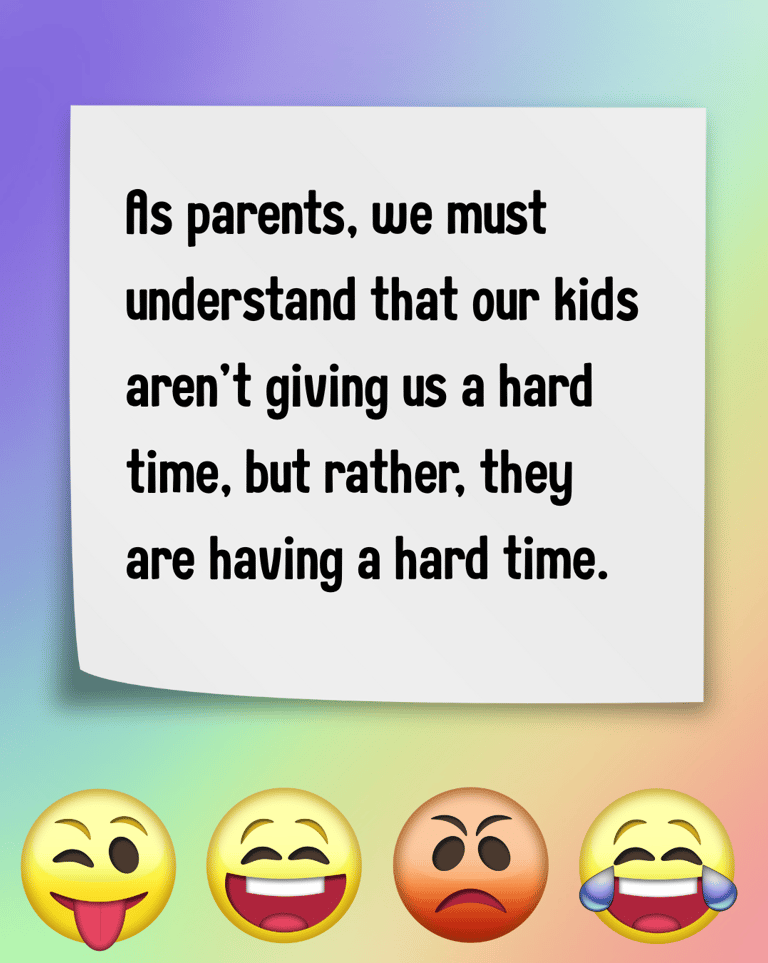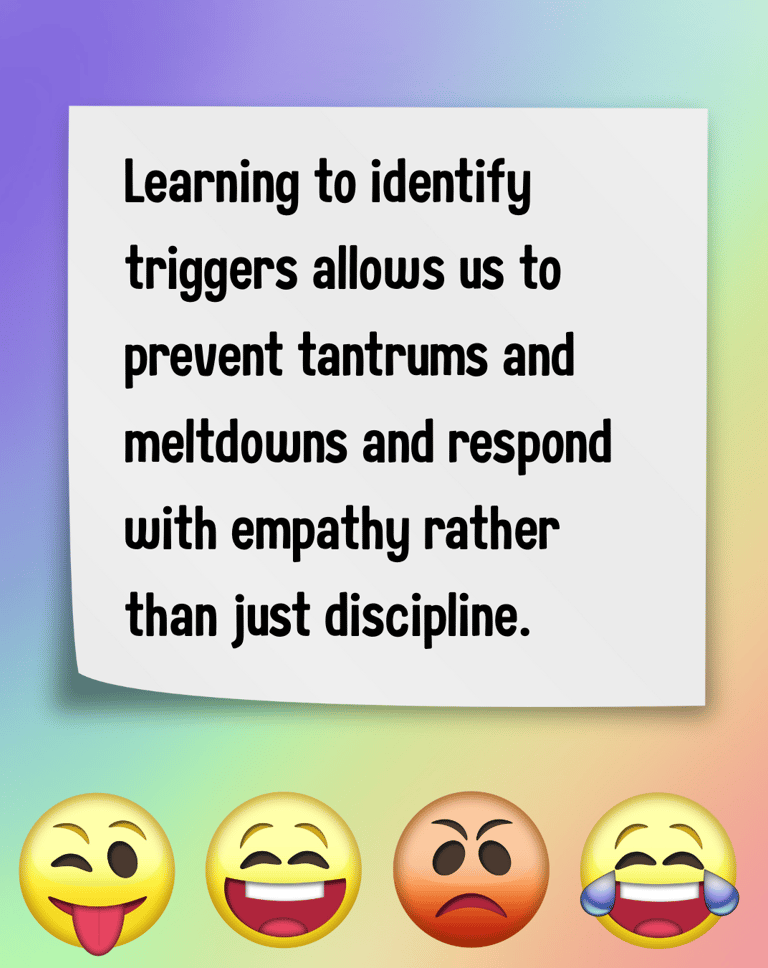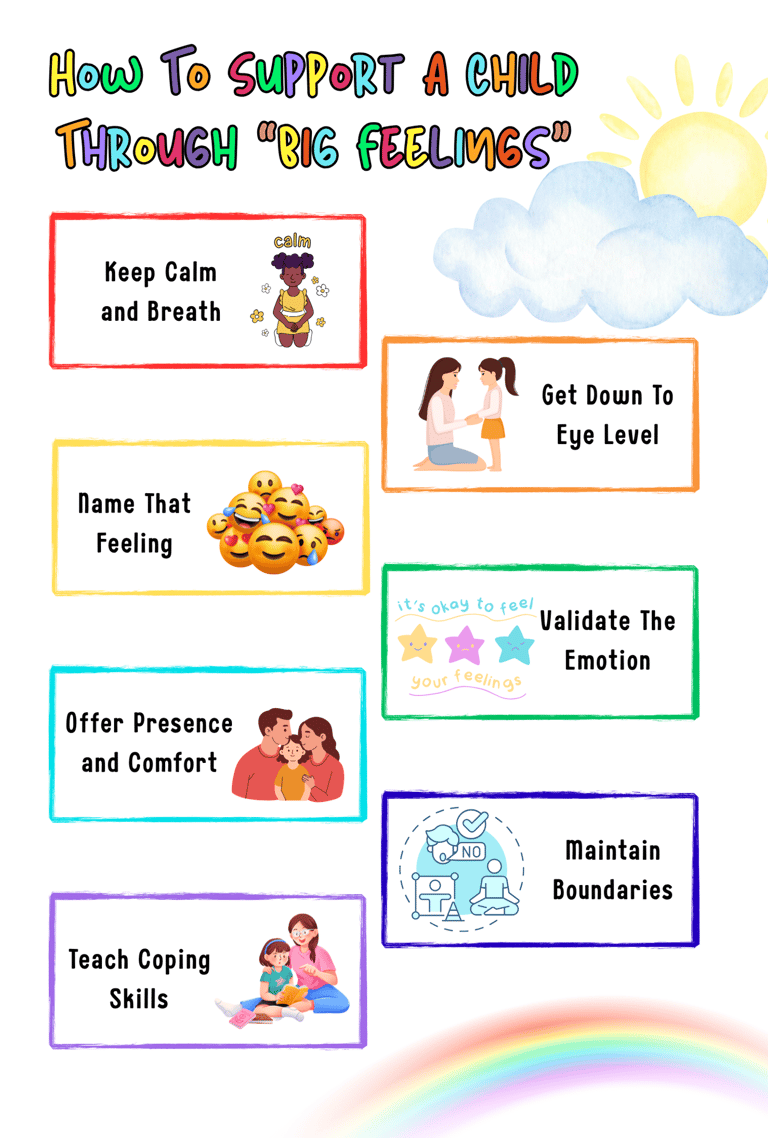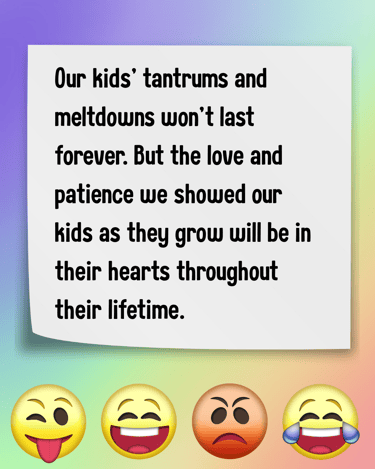When Little Hearts Feel Big Things: A Nurse-Mom's Guide To Support Your Child Through Tantrums and Meltdowns
Parenting a toddler often means navigating meltdowns and tantrums that can leave us overwhelmed, exhausted, and wondering if we’re “doing it right.” As a nurse-mom who faces these same challenges, I wrote this post to share both professional insights and personal experiences to help you support your child through their big feelings with patience and love.
TENDER LOVING CARE FOR MOMS & KIDS
Sheri Anne Maximille Cabañes-Madayag
9/14/20257 min read


Disclaimer: This blog post is based on personal and professional experience and is intended for informational and educational purposes only. This is not a substitute for professional medical advice, diagnosis, or treatment. Always consult with your healthcare provider for specific questions or concerns regarding your health.
"NO! NO! NOOOOOO!"
I hear this every day from my toddler. Sometimes with an angry face. Most of the time, while crying and jumping up and down or sitting on the floor, kicking both feet in all directions.
As I write this, my toddler is sleeping soundly after almost an hour of meltdown. The reason? She turned off the light during bedtime and hated that it was dark.
One of the biggest challenges of parenting a toddler is supporting their "big feelings". Meltdowns and tantrums test our patience to the limit. In these moments, we often find ourselves questioning our parenting skills.
As a nurse-turned-writer and a mom to a strong-willed 3-year-old, I also experience those overwhelming moments. In this blog post, let's explore how we can support our children through these challenging, yet totally normal, moments.
What We’ll Explore Together
Children And Their Big Feelings
My dear fellow parents, I want to start by saying that it's not our fault. Our kids' tantrums and meltdowns do not mean we're failing as parents. These are normal parts of a child's development. Even adults experience these, too.


During early childhood, a child's brain is rapidly growing and continuously developing its functions, including their emotions. Emotional development is a lifelong process of learning to experience, express, understand, and manage emotions throughout childhood, adolescence, and adulthood.
A child is still starting to experience different emotions, like frustration, disappointment, and anger. They don’t have the words to those emotions or the ability to properly express them yet.
Children's emotions are bigger than the words or skills they have to handle them. These make them feel confused and overwhelmed, which results in tantrums and meltdowns.
As parents, we must understand that our kids aren't giving us a hard time, but rather, they are having a hard time. To them, it feels like their world is ending. Their big feelings are real, even when the reasons seem small and trivial.
Tantrums vs. Meltdowns: Is There Any Difference?
Tantrums and meltdowns are often used interchangeably, but these two terms have differences.
Tantrums are voluntary and have a goal of getting something like a toy or a candy. Tantrums usually stop when what the child wants is given.
Meltdowns are involuntary and caused by sensory or emotional overwhelm. During meltdowns, the child experiences loss of control of their emotions, difficulty processing information, and an inability to regulate behavior. They do not stop with reasoning or even giving in to what the child wants. Meltdowns require the child to calm down and reset by removing them from the overwhelming environment.


Kids often throw tantrums or have meltdowns because they don't know how to deal with strong emotions or disappointments. Common triggers of tantrums and meltdowns include:
Fatigue
Hunger
Changes in routine
Seeking attention
Not getting something they want (such as a treat or toy)
Avoiding doing something
Frustration with limits or rules
Difficulty expressing themselves
Knowing what triggers helps us understand why tantrums and meltdowns happen. Learning to identify triggers also allows us to prevent tantrums and meltdowns and respond with empathy rather than just discipline.
How to Support A Child Through Big Feelings
As parents, we play a crucial role in our kids' emotional development. Below are helpful ways how we can support our kids through big feelings.
Keep Calm and Breath
The way we react to our kids' big feelings matters. Responding to a child's tantrums and meltdowns with anger will not calm them down. It would only escalate the situation.
I remember one time when my kid was throwing a tantrum before bedtime. I was tired and sleepy myself, so I raised my voice at her. The crying just intensified and took her longer to calm down.
I know it's hard to stay calm when you're frustrated. Take a deep breath. Don't take the tantrums personally. Staying calm during our kids' tantrums and meltdowns can be a powerful tool we can use to model calm behavior.
Get Down To Their Level
With these, I don't mean that we should also throw a tantrum when our kids are having one. Remember, stay calm. What I wanted to say is to get down to the kids' eye level.
Having to look up to a parent who is standing tall can be overwhelming for a kid during a meltdown. Squat or sit on a chair or on the floor to get down to the kid's eye level. This creates a soothing feeling and a stronger connection with our kids.
When my kid is throwing a tantrum, I sit on the floor or carry her when she wants to be held. I would look her in the eye, then whisper to her ear, "It's ok. Mommy's here." I notice the crying would subside afterwards.
Name That Feeling
Children are still learning new words, including naming emotions. When we name emotions, we help our kids understand what they are feeling.
Use simple statements like, "You look excited," or "I see you're angry because playtime is over." Knowing what they are feeling helps build emotional intelligence over time.
My kid would always tell me she's "happy" when we're cuddling at bedtime. I tell her I'm happy too. We're still teaching her about other feelings like sad, mad, and scared.
Validate The Emotion
Brushing off a child's emotions makes them feel that their feelings don't matter. Saying “It’s not a big deal,” or “Stop crying,” invalidates their feelings. Instead, try saying, "You're sad because your toy broke. It's ok to feel sad."
When my kid is having big feelings, I tell her, "It's ok to feel [name of emotion]. Mommy feels [name of emotion], too, sometimes." Saying this lets her know that her feelings are normal and that adults can also have the same feelings.
Validating emotions is vital for a child's emotional development. It does not mean agreeing or giving in. Acknowledging a child's big feelings makes them feel seen, understood, and valued. By validating our kids' emotions, we become their "safe space" for expressing their feelings.
Offer Presence and Comfort
A child having big feelings needs to feel safe and connected. Offering our presence and comfort can help our kids calm down during tantrums and meltdowns.
Stay close and listen to them. Saying, "I'm here with you," makes them feel they're not alone in their big emotions. Some kids want a hug, while others need space.
I always stay close to my kid and ask what she needs. When she's calmer, I hug her and tell her, "Mommy loves you even if you're [name of emotion]." This lets her know that she is loved and accepted despite her big feelings.
Maintain Boundaries
It may sound confusing to think about validating emotions and setting boundaries. This is especially true for toddlers who seem to always disobey the rules. As mentioned earlier, validation does not mean giving in or letting the bad behavior slide.
We can acknowledge our kids' feelings while maintaining firm boundaries and correcting their behavior. My kid usually throws objects when she's angry or frustrated. We would always tell her, "It's okay to be mad, but throwing objects is not okay." This teaches her that her feelings are valid, but boundaries remain.
Teach Coping Skills
During a meltdown is not the right time to teach appropriate behavior. However, when our kids are calm, it is then that we can explain the situation to them. It is also a good opportunity to teach skills that will help them calm down:
Deep breathing.
Counting to 10.
Using the right words to express how they feel.
My daughter already enjoys counting 1 to 10 and backwards, so I start counting to calm her down during her tantrums. During playtime, I try to teach her about deep breathing by blowing bubbles. She is still learning this skill.
Teaching calming strategies helps our kids develop skills for emotional regulation. It takes a lot of practice, but these strategies help build emotional resilience over time.


A Gentle Reminder for Parents


Supporting our kids through their "big feelings" is not an easy and steady journey. There will be days that we handle their tantrums and meltdowns like a rockstar. But there will also be days when we feel like crying out of frustration and fatigue, while our kids scream over the wrong color of socks.
It's okay to have times when we can't handle our kids' big feelings perfectly. Managing our kids' big feelings, as well as our own emotions, is a lifelong learning process.
I remember a time when I shouted at my kid and cried while she was throwing tantrums. Good thing I have a supportive husband who stayed with our kid while I was crying in the bathroom trying to calm myself down. After all, we are still humans, trying our best to raise our little kids.
Our kids don't need perfect parents. They need parents who are trying their best and loving them, even during the hard times.
Remember, my dear fellow parents, our kids' tantrums and meltdowns won't last forever. But the love and patience we showed our kids as they grow will be in their hearts throughout their lifetime.
How are you supporting your kids when they're having big feelings?
Your stories might help another parent feel less alone.
I'd love to hear your thoughts. Feel free to reach out through my contact page.
Note: This post is for informational purposes only and is not a substitute for professional medical advice. Please speak with your healthcare provider about your specific health concerns.
